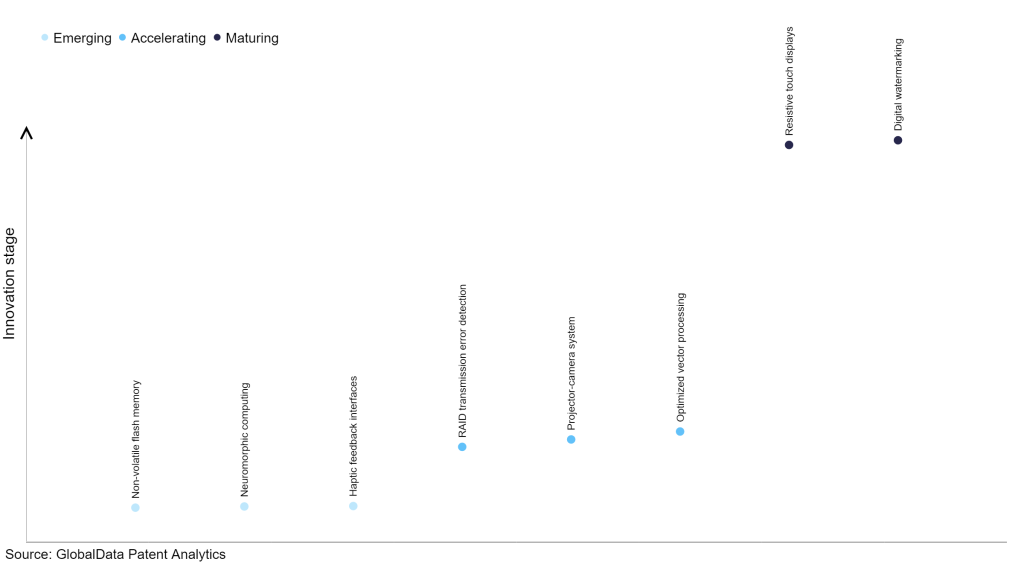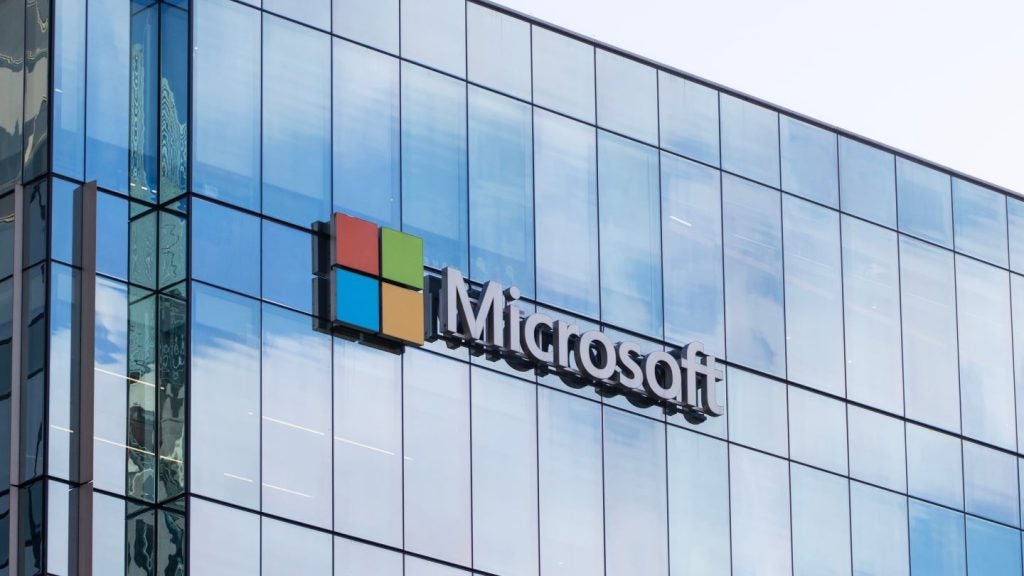The technology industry continues to be a hotbed of patent innovation. Activity is driven by the increasing demand for higher storage capacity in consumer electronics such as smartphones, tablets, and solid-state drives (SSDs), the growing need for data storage in enterprise and cloud computing environments, and growing importance of technologies such as advanced NAND flash memory architectures, error correction codes (ECC), wear-levelling algorithms, and data management techniques to ensure data integrity, reliability, and longevity. In the last three years alone, there have been over 1.5 million patents filed and granted in the technology industry, according to GlobalData’s report on Innovation in technology: multi-level flash memory. Buy the report here.
However, not all innovations are equal and nor do they follow a constant upward trend. Instead, their evolution takes the form of an S-shaped curve that reflects their typical lifecycle from early emergence to accelerating adoption, before finally stabilizing and reaching maturity.
Identifying where a particular innovation is on this journey, especially those that are in the emerging and accelerating stages, is essential for understanding their current level of adoption and the likely future trajectory and impact they will have.
185+ innovations will shape the technology industry
According to GlobalData’s Technology Foresights, which plots the S-curve for the technology industry using innovation intensity models built on over 1.6 million patents, there are 185+ innovation areas that will shape the future of the industry.
Within the emerging innovation stage, non-volatile flash memory, neuromorphic computing, and haptic feedback interfaces are disruptive technologies that are in the early stages of application and should be tracked closely. RAID transmission error detection, projector-camera system, and optimized vector processing are some of the accelerating innovation areas, where adoption has been steadily increasing. Among maturing innovation areas are resistive touch displays and digital watermarking, which are now well established in the industry.
Innovation S-curve for the technology industry

Multi-level flash memory is a key innovation area in technology
Multi-level flash memory is a non-volatile memory technology that employs multiple voltage levels for data storage and retrieval. It finds applications in various consumer electronic devices such as digital cameras, cell phones, and tablets. Compared to traditional single-level flash memory, multi-level flash memory offers a higher data storage capacity within a smaller physical footprint. Additionally, it delivers faster read and write speeds, enhancing overall performance.
GlobalData’s analysis also uncovers the companies at the forefront of each innovation area and assesses the potential reach and impact of their patenting activity across different applications and geographies. According to GlobalData, there are 50+ companies, spanning technology vendors, established technology companies, and up-and-coming start-ups engaged in the development and application of multi-level flash memory.
Key players in multi-level flash memory – a disruptive innovation in the technology industry
‘Application diversity’ measures the number of applications identified for each patent. It broadly splits companies into either ‘niche’ or ‘diversified’ innovators.
‘Geographic reach’ refers to the number of countries each patent is registered in. It reflects the breadth of geographic application intended, ranging from ‘global’ to ‘local’.
Patent volumes related to multi-level flash memory
Source: GlobalData Patent Analytics
Micron Technology is the top patent filer in the multi-level flash memory space. One of the company’s patents focuses on apparatuses and methods for determining trim settings on a memory device. For instance, an apparatus can calculate a set of trim settings for the memory cell array based on its operational characteristics, where the trim settings are associated with the desired operational characteristics of the array.
Other prominent patent filers in the space include Silicon Motion Technology and Western Digital.
By geographic reach, MOSAID Technologies leads the pack, followed by Benhov and Silicon Motion Technology. In terms of application diversity, Micron Technology holds the top position, followed by Western Digital and Samsung Group.
Multi-level flash memory allows multiple bits of data to be stored in a single memory cell. It offers higher data storage density compared to traditional single-level cell (SLC) flash memory. The ability to store more data in a smaller footprint, coupled with advancements in memory controller technology, makes it an essential component in modern data storage solutions.
To further understand the key themes and technologies disrupting the technology industry, access GlobalData’s latest thematic research report on Technology.
Data Insights
From

The gold standard of business intelligence.
Blending expert knowledge with cutting-edge technology, GlobalData’s unrivalled proprietary data will enable you to decode what’s happening in your market. You can make better informed decisions and gain a future-proof advantage over your competitors.







